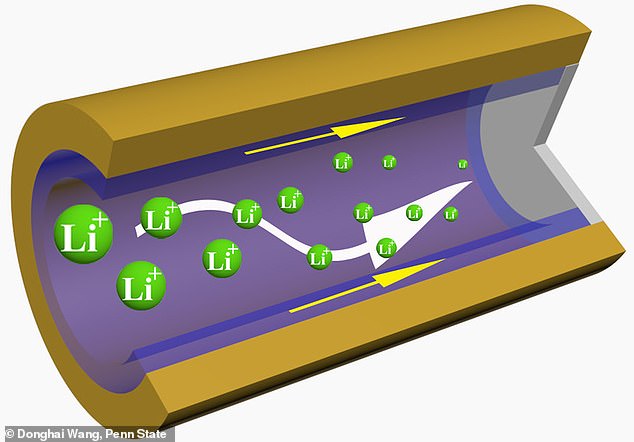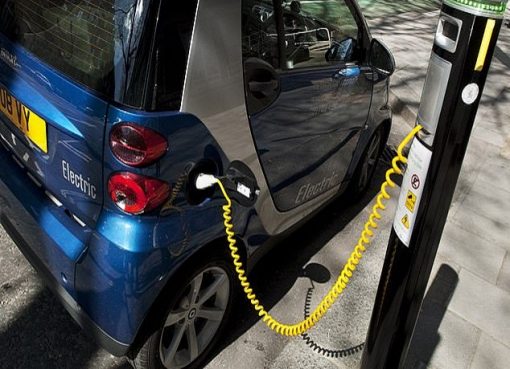Scientists have created the ‘next generation of metal batteries’ that last twice as long and charge faster than ever before.
Researchers created the battery using a three-dimensional, cross-linked polymer sponge.
Scientists say these new batteries could be much safer than standard lithium batteries which have ‘fundamental issues’ causing them to suddenly explode and burst into flames.
This project aims to develop the next generation of metal batteries,’ said lead research Donghai Wang who is professor of mechanical engineering at Penn State University.
‘Lithium metal has been tried in batteries for decades, but there are some fundamental issues that inhibit their advancement.’
In their simplest form, batteries are made of three components: a positive electrode, a negative electrode and an electrolyte.
When a battery is charging, lithium ions are extracted from the positive electrode and move through the crystal structure and electrolyte to the negative electrode, where they are stored.
The faster this process occurs, the faster the battery can be charged.
However, when lithium ion batteries are charged quickly – like they are in electric vehicles – they form needle-like formations.
These needles reduce the battery’s life cycle and potentially cause safety issues — including fires or explosions.
‘Our approach was to use a polymer on the interface of lithium metal,’ Dr Wang said.
The material acts as a porous sponge that not only promotes ion transfer, but also inhibits deterioration.
HOW DOES CHARGING A BATTERY WORK?
In their simplest form, batteries are made of three components: a positive electrode, a negative electrode and an electrolyte.
When a battery is charging, lithium ions are extracted from the positive electrode and move through the crystal structure and electrolyte to the negative electrode, where they are stored.
The faster this process occurs, the faster the battery can be charged.
The material a battery is made of can severely restrict this rate.
Graphite is a commonly used material for the negative electrode as it accepts positive ions well and has a high energy density.
In the search for new electrode materials, researchers normally try to make the particles smaller.
However, it’s difficult to make a practical battery with nanoparticles as it creates a lot of unwanted chemical reactions with the electrolyte, so the battery doesn’t last as long, plus it’s expensive to make.
This allowed the metal plating to be free of dendrites, even at low temperatures and fast charge conditions,’ he said.
The practical applications of this work could enable more powerful and stable metal battery technologies integral to everyday life, according to researchers.
‘In an electric vehicle, it could increase the range of a drive before needing a charge by hundreds of miles,’ Dr Wang said.
‘It could also give smartphones a longer battery life.’
‘We want to push these technologies forward. With this work, I’m positive we can double the life cycle of these lithium metal batteries.’










